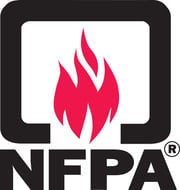Cleaning Your Rescue Rope…Here’s What the Experts Have to Say

We are often asked, “How should I clean my rescue rope?”
First and foremost, always follow the manufacturer’s recommendations for cleaning and caring for your rescue rope. Your rope is a critical link in your rescue system, and it should be treated accordingly.
Excessive dirt and grit on your rope can lead to wear that reduces a rope’s strength and lifespan – so it’s important to clean your rope when needed.
 Here’s what NFPA 2500 says about cleaning and decontaminating rope:
Here’s what NFPA 2500 says about cleaning and decontaminating rope:
Ref: NFPA 2500: Standard for Operations and Training for Technical Search and Rescue Incidents and Life Safety Rope and Equipment for Emergency Services, 2022 Edition - Chapter 32 Cleaning and Decontamination (NFPA 1858)
32.2.3 Routine Cleaning Process for Life Safety Rope and Webbing
32.2.3.1 The organization shall determine its requirements for when rope or webbing shall be cleaned.
32.2.3.2 In the absence of manufacturer's instructions, the cleaning procedure shall be as follows:
- Remove as much debris, dirt, and mud as possible at the scene.
- Rinse off any excess dirt with a hose.
- Soak the rope or webbing for a minimum of 30 minutes in a plastic tub of water with mild detergent added.
- Rinse the rope or webbing by pulling it through a rope washing device twice.
- Hang the rope or webbing in a cool, shady place to dry.
32.2.4 * Decontamination of Rope and Webbing (* references additional information in the Appendix)
(A.32.2.4 Biohazard cleaning agents can have an adverse effect on the strength of software products. The organization should determine the risk versus benefit of excessive decontamination of rope. At some point, it is best to take the rope out of service.)
32.2.4.1 The organization shall determine requirements pertaining to rope or webbing being taken out of service due to contamination.
32.2.4.2 Rope or webbing that has come into contact with blood or other body fluids shall be decontaminated using detergents or cleaning agents approved for removing biohazards according to the organization’s protocols for decontaminating PPE.
 Here’s what PMI says about cleaning and decontaminating rope:
Here’s what PMI says about cleaning and decontaminating rope:
WASH IT – You can wash dirty ropes by hand or in a front-loading commercial washing machine using cold to warm water with a mild soap. Non-detergent soaps are best. Soap should not contain any bleaching agents. And PMI has a product called “Rope Soap” that is recommended.
PMI recommends that top loading washing machines with agitators not be used – they tend to tangle the rope and might even cause damage from friction produced by rubbing of the synthetic rope against the synthetic agitator.
It’s also important to note that ropes may shrink up to 6% after washing – you may want to verify rope length periodically.
LUBRICATE IT – Ropes may dry out and lose some flexibility after washing. Occasionally, you can add a small amount of fabric softener (about a cup) to the rinse cycle. Do not use more than this as it may damage your rope.
DRY IT – Dry your rope in a clean, dry area out of direct sunlight. For best results, it should be laid in a loose coil or coiled around two objects in a low-humidity environment.
AVOID:
- Using a commercial dryer.
- Placing wet ropes on a concrete surface.
(Moisture in the concrete can create a mild acid vapor.) - Exposure to exhaust fumes.
And, write it down. Remember to record the cleaning on your rope log.
STORE IT SAFELY – Store your rope in a clean, dark, dry environment, away from exposure to acids, other harmful chemicals, noxious fumes or other abuse. Make sure it is completely dry before storing.
Note: Even properly stored rope can lose strength over time, so it’s critical to store it properly!
DECONTAMINATION – Disinfection of a rope may occasionally become necessary, such as when exposed to bloodborne pathogens. PMI recommends following the NFPA standard for cleaning rescue gear of bloodborne pathogens.
Prepare a solution of 60ml (approximately ¼ cup) of household bleach for every 4 liters of tap water (approximately 1 gallon). Soak the rope for 10 minutes in the solution and then rinse or wash the rope. The rinsing cycle is critical to prevent any damage to the rope from the bleach.
Note: It is vital that the bleach be thoroughly rinsed from the rope. And, repeated uses of bleach can cause damage to nylon fibers – use of bleach to disinfect should be used sparingly and only when needed.
Again, your rope is a critical part of your rescue system. It deserves your close attention in care, storage, cleaning, use and inspection. And, as always, if there’s any doubt – throw it out!!
Additional Resources





